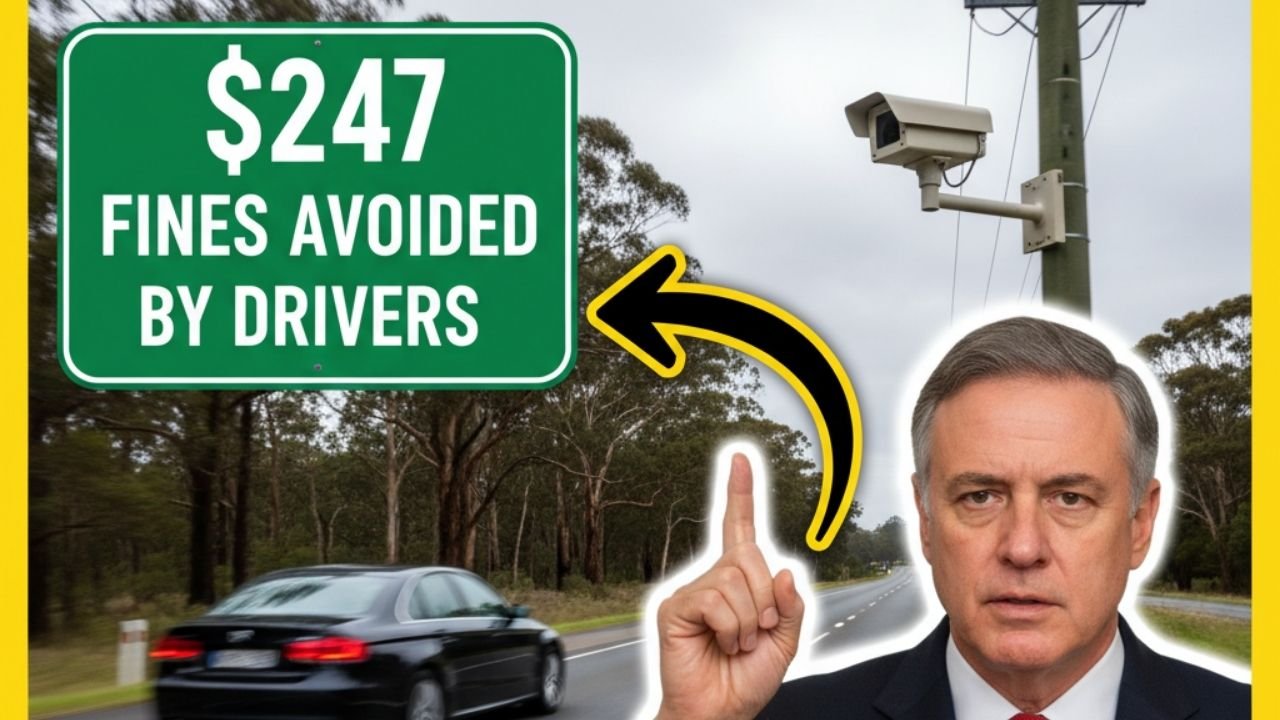Speed cameras are now a common sight on Australian roads, from busy highways to local streets and construction zones. They are designed to slow drivers down and reduce accidents. However, a loophole in the law is allowing some motorists to contest their $247 speeding fines, raising concerns about fairness and road safety.
How Speed Cameras Catch Drivers
Speed cameras work automatically, capturing:
- Vehicle speed
- Location and time of the offense
- Photographs of the car and license plate
Some cameras are fixed in one location, while others are mobile and can be moved to high-risk areas. The goal is to reduce speeding without requiring a police officer on site.
Minor Speeding Offenses and Consequences
Even small infractions, such as exceeding the speed limit by less than 10 km/h, can result in:
- A $247 fine (state-dependent)
- 1–2 demerit points on your license
- Possible increases in car insurance premiums
Though minor, these penalties still affect driving records and costs.
The Loophole: When Fines Can Be Challenged
Drivers have successfully contested tickets by identifying technical errors related to road signage or camera placement. Key points include:
- Visibility of speed limit signs – Signs must be clear and unambiguous
- Temporary limits – Construction zone speed limits require proper signage
- Camera placement – Devices must follow legal requirements
Failing to meet these conditions can lead to tickets being dismissed.
Real-Life Examples
- In Sydney, a driver overturned a fine because the construction zone signs were unclear.
- In Victoria, another motorist won a case after proving the speed camera was improperly installed.
These cases demonstrate that attention to detail in traffic law can sometimes work in drivers’ favor.
Police and Official Response
Authorities warn that:
- Most speeding tickets are accurate and legally valid
- Loopholes are rare, and following the rules remains the safest choice
- Speeding continues to be a leading cause of accidents in Australia
Officials emphasize that while some tickets may be challenged, road safety should always come first.
Public Debate: Safety vs Loopholes
The loophole has sparked differing opinions:
Proponents of speed cameras argue:
- Cameras prevent accidents by slowing drivers
- Fines fund road safety initiatives
- Overall, cameras save lives and improve traffic conditions
Critics claim:
- Loopholes make the system seem unfair
- Some drivers feel fines are just a revenue tool
- Trust in traffic enforcement decreases when mistakes happen
Potential Fixes and Policy Changes
Experts suggest several improvements to make the system fairer and more effective:
- Clearer signage, especially in temporary zones
- Stricter camera placement rules
- Transparent enforcement reporting
- Regular reviews of fines and procedures to maintain public trust
These steps aim to make traffic laws easier to follow and roads safer for everyone.
FAQs
Q1: How much is a minor speeding fine in Australia?
A: Typically around $247, with 1–2 demerit points, depending on the state.
Q2: Can I fight a speeding ticket?
A: Yes, if there are issues with signage, camera placement, or other legal technicalities.
Q3: Are all speed cameras fixed?
A: No, some are mobile and can be relocated to accident-prone areas.
Q4: Do speeding fines affect insurance?
A: Yes, even minor fines can increase premiums.
Q5: What’s the government doing to prevent loopholes?
A: Authorities are reviewing signage, camera placement, and enforcement procedures to reduce errors.
Conclusion
While speed cameras protect Australian roads, the current loophole highlights the need for clearer rules and enforcement. Drivers should always follow speed limits to avoid fines and ensure safety. Meanwhile, authorities are working to tighten regulations and improve public confidence in the system. Staying informed and cautious is the best way to navigate Australia’s roads safely.




